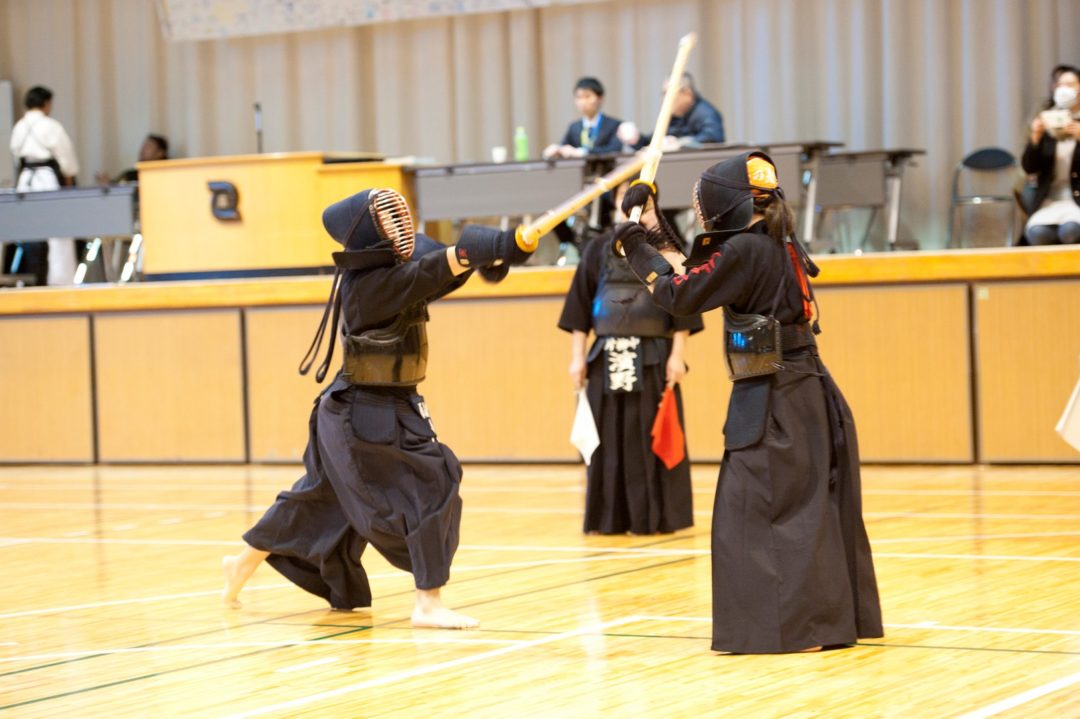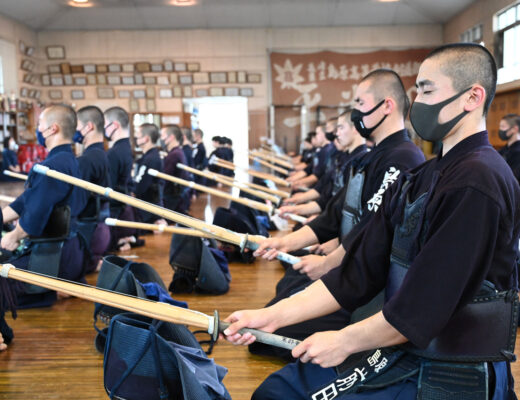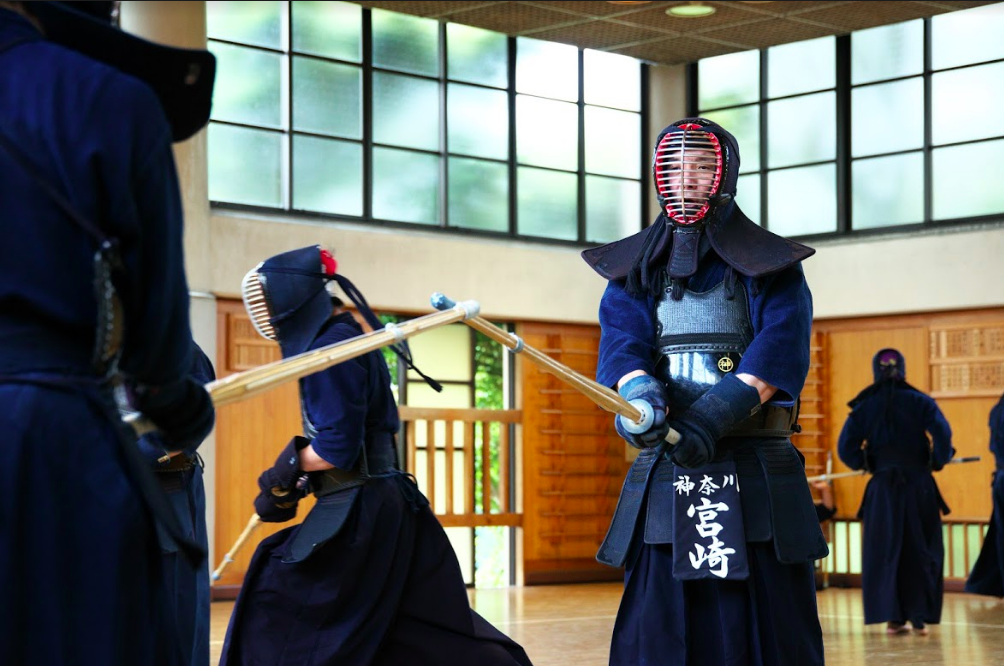2020.7 KENDOJIDAI
These instructors use a variety of creative ways to reach out to the children, who have been staying at home, to keep them motivated for Kendo. Due to the spread of the new coronavirus, young Kenshi continue to refrain from practice. How are Kendo instructors keeping children’s minds on Kendo while they are forced to study at home?
Youth Leaders’ Round-table Discussion: Keeping your mind on Kendo even when you are away from practice
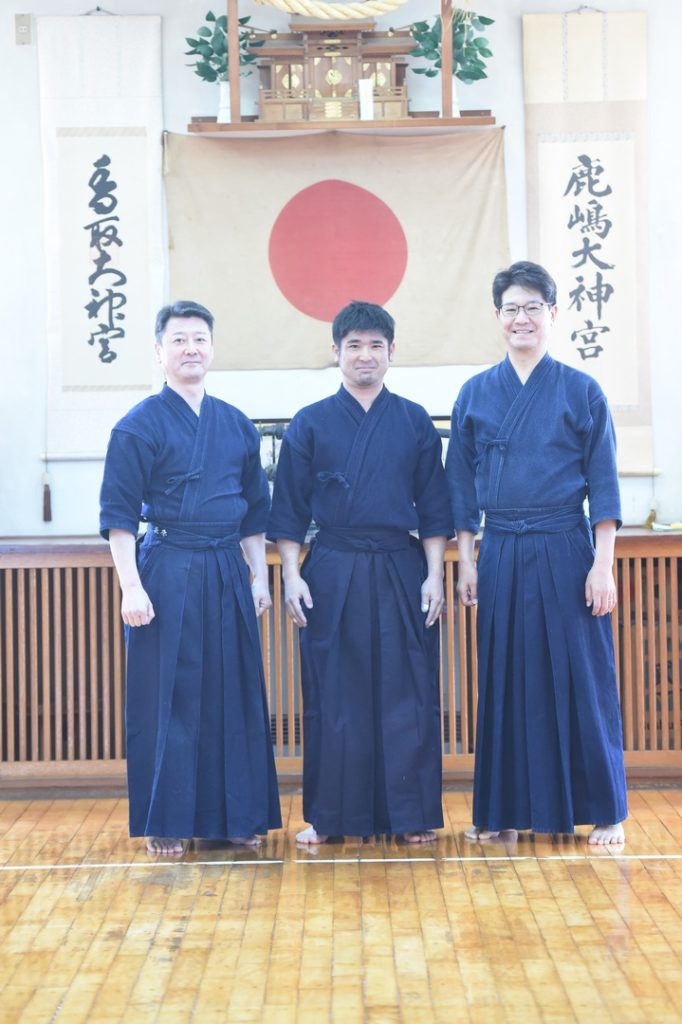
Tsuchida Kazuhiro (Totsuka Dojo)
Hagihara Junjiro (Seishinkan Kenyukai)
Akagi Norihito (Katakura Hokushinkan Nishiki Dojo)

Tsuchida Kazuhiro, 5th Dan, 49 yo
Born in 1971 in Kumamoto Prefecture. He was introduced to Kumamoto Naoshinkai at the age of 7. He went to Aso High School (now Aso Chuo High School) and spent three years living in a Dorm at Kenzenryo before joining his current company, Michiwa Shoko Co at which he has worked for 30 years now. He continues to practice Kendo at the company businessman team and won 3rd place in the Kanto Businessman’s Tournament. He taught youth at Totsuka Dojo in his home-town, leading them to 3rd place in the National Dojo Federation Tournament (junior high school).
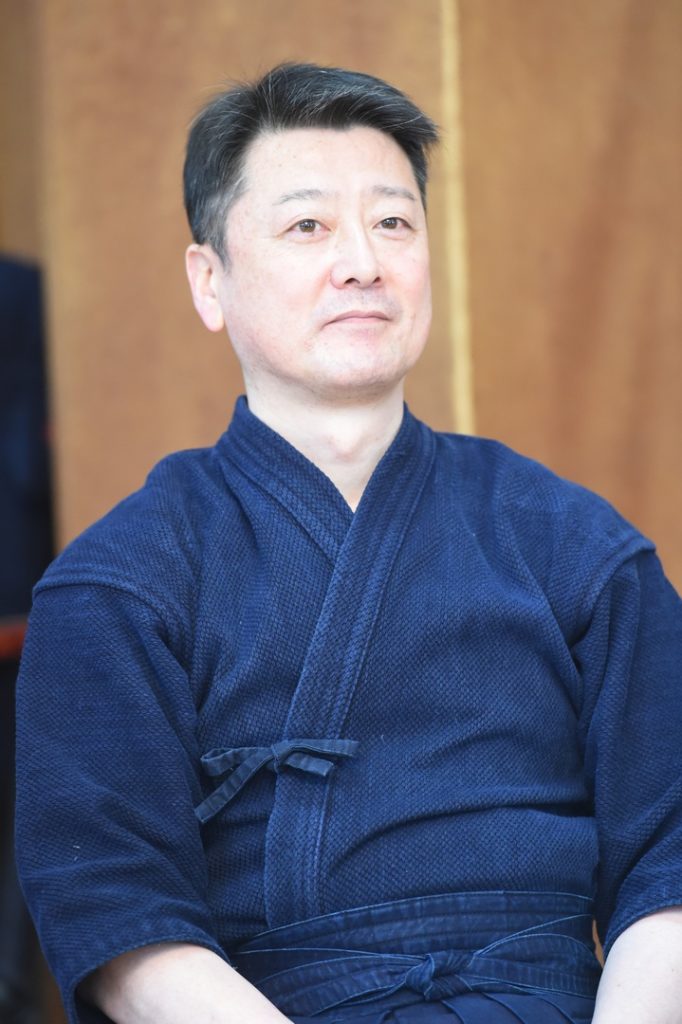
Hagihara Junjiro, 7th Dan, 48 yo
Born in 1972 in Saga Prefecture. Entered Saga Seiryuukan in 1979 under Komatsu Hachiro Sensei, Saga Yamato Junior High School in 1985 under Yoshiki Tomoya Sensei and Saga North High School in 1988. He was appointed as a Yokohama prison guard in 1991, and began teaching Kendo at the age of 30 in 2003 at Saishinkan Kenyukai. He won three awards for excellence at the All Japan Budo Tournament (Kendo division) for boys and girls.

Akagi Norihito, 6th Dan, 34 yo
Born in Kanagawa Prefecture in 1985. He was introduced to Katakura Hokushinkan Nishiki Dojo at the age of 5. Then entered Yokohama Municipal Rokkakubashi Junior High School , Yokohama University of Commerce High School and Tokai University School of Physical Education. After graduating from university, he started instructing the youth at Nishiki Dojo. Winner of the Kanagawa Kendo Dojo Federation Kendo Tournament. Currently works at Okamura Elementary School in Yokohama City.
Dojos around the world suspend training as they become a place to return to
– Thank you for taking time out of your busy schedule to come here today. Since the state of emergency was declared, children have been unable to practice Kendo and attend school. When did you teachers decide to cancel Keiko?
Tsuchida: February 29th was the last practice. In the evening of February 28, Prime Minister Abe issued a request to close the schools from March 2nd. After consulting with the president of the school, we decided to suspend our activities as a Dojo, as we were using the school’s facilities for training.
Hagiwara: We have decided to take a break from training at the school facility from February 28. However, because the Saishinkan also rents the Dojo at Yokohama Prison where our instructors work, we practised three times in March and were able to hold a send-off party for the sixth graders, albeit a brief one.
Akagi: As the Nishiki Dojo is a private Dojo, we practised once a week in March, but in April, the Dojo was cancelled after the state of emergency was declared.
– Some Dojos have not seen the children for about two months, do you ever keep in touch with them?
Tsuchida: We do not compel them to do so, but we have tried to create a plan with the children to promote regularity in their lives. When I check the current situation with the parents, they seem to be generally following the plan. Over time, they seem to be loosening up, so we asked the parents to follow up and they are doing more than expected to follow the plan chart. We can also check out the social media posts by parents showing their children’s Suburi. For example, I take videos of three patterns of Suburi in advance and upload them to the Totsuka Dojo’s communication app so that they can learn how to do Keiko. I connect by phone and check the children’s Suburi as part of my routine.
Hagiwara: We don’t provide that kind of guidance at all. Because of this situation, we tell them to take good care of their bodies and health in order to make them grow, which we prioritize. When I was a child, the training sessions at my home Dojo were very strict. At first, I was happy when we had the occasional day off from training, but sooner or later my body would start to itch and I would want to move around, so I expected that to be the case and didn’t give any special instructions.
– Have you had no contact with the parents?
Hagiwara: We haven’t been able to practice for a long time, so in April I contacted the parents to see how their children were doing and to ask them about their efforts. There were two groups of parents who made an Uchikomi dummy for their children to strike at the request of their children.
– Are they able to make their own?
Hagiwara: They got tires from mail-order stores and other sources, and assembled them in a creative way. Tools are available for rent at home centers nowadays, so it’s apparently possible to make one with only inexpensive materials. Because of the pandemic, parents are often reminded of the way their children used to work hard at practice and Shiai.
It seems to make them want to support their children. This manifests itself in the construction of Uchikomi dummies and the like. I think the bond between parent and child has deepened.
Tsuchida: The parents must have started contemplating it, because Hagiwara Sensei did not go as far as to compel them. I feel that our Dojo has also strengthened the bond between parent and child.
– Akagi Sensei, what did you do in your Keiko until March?
Akagi: We made the number of participants small and divided the time into sections. We used to have two divisions, one for elementary school students and one for junior high school students and above. Now, we divided them into four divisions: lower elementary school students, upper elementary school students, junior high school students, and high school students and above. Most of the high school and university students had no place for Keiko, and many of them returned to their home Dojo. The week after schools were closed was the week with the largest number of participants. It was difficult to ventilate the Dojo.
– That’s the great thing about the Dojo. Even after growing up to high school, university, and into adult social life, it is precious to have a place to come back to, the starting point of one’s Kendo.
Akagi: Up until now, I have been teaching children to win Shiai and make them stronger. However, seeing high school and university students coming back to the Dojo for Keiko, I reaffirmed the importance of preserving a place like this.
– Akagi Sensei, you are from the Nishiki Dojo too aren’t you? When you were teaching, did you have a sense of a place of return to?
Akagi: I am ashamed to say that I did not have that in mind. I just wanted to be useful to the children in the Dojo, and that’s how I came to be involved in coaching. I wanted my younger Kohai to like Kendo and become stronger. From there, I started to observe their training and organize training sessions. Seeing everyone come back and do Keiko at the Dojo made me realize its significance again.
Tsuchida: “I’ve made a schedule to promote regularity in life.”
Hagiwara: “There were two groups of parents who built a Uchikomi dummy at the request of their children.”
Akagi: “High school and university students have come back to their old Dojo and reaffirmed the importance of places like this.”
Being away from Kendo Keiko: The danger of growing discontinuity
The rest of this article is only available for Kendo Jidai International subscribers!

